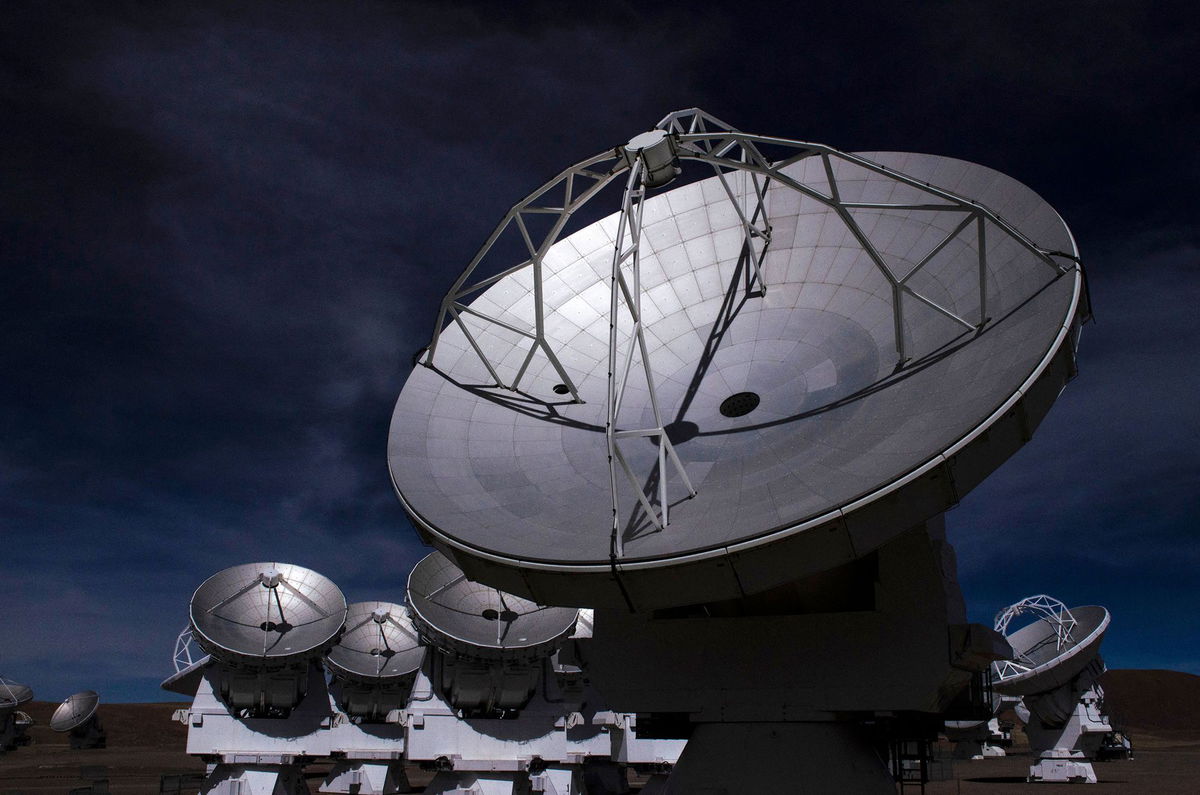Astronomers’ discovery of distant Milky Way-like galaxy challenges our theories of how cosmos evolved

The Atacama Large Millimeter/submillimeter Array (ALMA) project in northern Chile
(CNN) — Researchers have discovered a distant disc galaxy that has surprisingly similar characteristics to our own Milky Way, and it could change our understanding of how galaxies form.
The galaxy, which has been named REBELS-25, is far more orderly than the existing science suggests it should be for its age, according to research led by astronomers from Leiden University in the Netherlands.
REBELS-25 is much younger than our galaxy, but it already shares its rotation and structure, rather than appearing clumpy and chaotic like other early galaxies, the researchers said in a statement published October 7.
“According to our understanding of galaxy formation, we expect most early galaxies to be small and messy looking,” Jacqueline Hodge, an astronomer at Leiden University and co-author of the study, said in the statement.
Early galaxies tend to join together and develop smoother shapes incredibly slowly, with our Milky Way taking billions of years to develop tidy structures, the researchers said.
The light reaching Earth from REBELS-25 was emitted just 700 million years after the universe was formed 13.8 billion years ago, a surprisingly short amount of time for it to have become so orderly, they said.
“Seeing a galaxy with such similarities to our own Milky Way, that is strongly rotation-dominated, challenges our understanding of how quickly galaxies in the early Universe evolve into the orderly galaxies of today’s cosmos,” Lucie Rowland, a doctoral student at Leiden University and first author of the study, said in the statement.
The rotation and structure of the galaxy were observed using the Atacama Large Millimeter/submillimeter Array (ALMA) telescope in northern Chile.
The team also found data that hinted at even more developed features, such as spiral arms, and they plan to carry out more observations to confirm whether they in fact exist.
“Finding further evidence of more evolved structures would be an exciting discovery, as it would be the most distant galaxy with such structures observed to date,” Rowland said.
Andrew Blain, a professor of astrophysics at the University of Leicester, who was not involved in the paper, said REBELS-25 is “a bit unusual,” but “it’s not a revolution.”
Blain highlighted the role of ALMA in finding a real example of a kind of galaxy that had previously only been produced in simulations.
“Without ALMA there’s been no ability to identify an example – both because individual examples would have been too faint to detect in a reasonable time, and a large enough sample of candidates could not be searched,” he told CNN. “ALMA also reveals details finer than earlier telescopes.”
Blain said more research is needed before scientists change their understanding of galaxy formation.
“A question would be are they very rare, or does every galaxy go through a phase like this,” he said. “If they’re common, then models will have to be tweaked.”
Dave Clements, a reader in astrophysics at Imperial College London, who was not involved in the paper, said it “is quite a surprise” to find a galaxy like REBELS-25.
“The universe back then is thought to be a lot more chaotic, with galaxy interactions and mergers expected to disrupt the relatively fragile structure of a disk. And yet that’s what REBELS-25 looks like,” he told CNN.
”Is it just a very unusual galaxy, that’s led an unexpectedly quiet life up to when we see it, or are these observations telling us that the early stages of galaxy formation don’t work the way we think? At this point we don’t know.”
The research, which is available as a preprint (a scientific paper that has not gone through the peer-review process), has been accepted for publication in the journal Monthly Notices of the Royal Astronomical Society.
The-CNN-Wire
™ & © 2024 Cable News Network, Inc., a Warner Bros. Discovery Company. All rights reserved.